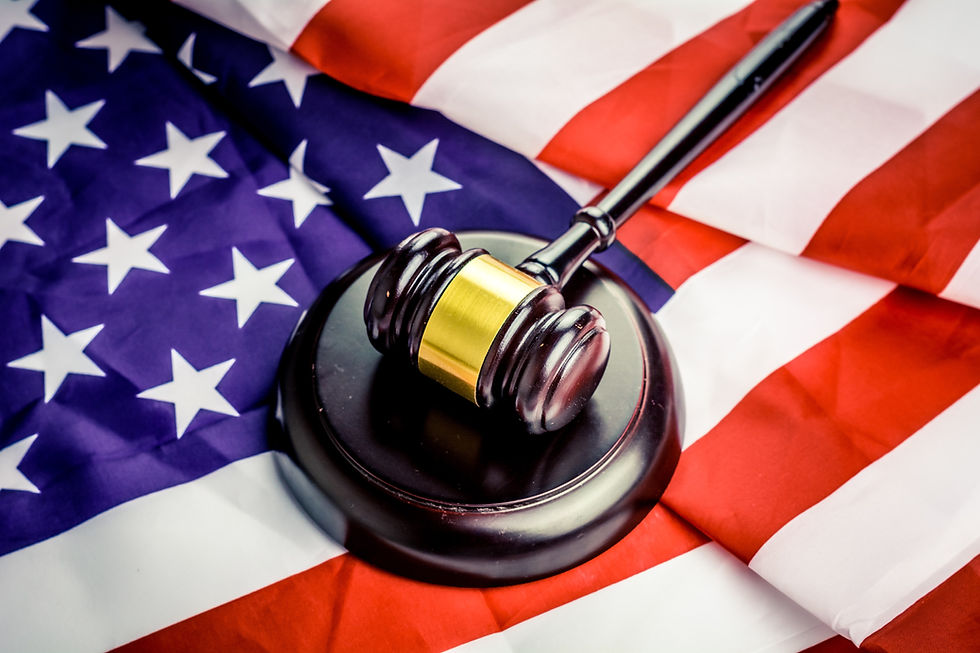New Life for AI and Software Based Patents?
- laurencejohn9
- Sep 30
- 4 min read

Under the leadership of newly appointed USPTO Director John A. Squires, the Appeals Review Panel (ARP) in In re Desjardins overturned the PTAB's decision to reject claims related to training machine learning models under 35 USC 101. Whether this decision indicates a sustainable shift in the USPTO's tendency to automatically categorize training methods for artificial intelligence and software-related inventions as abstract ideas remains to be seen.
Claims
The Desjardins claims are directed to a method for training machine learning models to learn successive new tasks without "catastrophic forgetting" of knowledge from previously learned tasks.
Independent claim 1 recites the following limitations:
A computer-implemented method of training a machine learning model, wherein the machine learning model has at least a plurality of parameters and has been trained on a first machine learning task using first training data to determine first values of the plurality of parameters of the machine learning model, and wherein the method comprises:
determining, for each of the plurality of parameters, a respective measure of an importance of the parameter to the first machine learning task, comprising:
computing, based on the first values of the plurality of parameters determined by training the machine learning model on the first machine learning task, an approximation of a posterior distribution over possible values of the plurality of parameters,
assigning, using the approximation, a value to each of the plurality of parameters, the value being the respective measure of the importance of the parameter to the first machine learning task and approximating a probability that the first value of the parameter after the training on the first machine learning task is a correct value of the parameter given the first training data used to train the machine learning model on the first machine learning task;
obtaining second training data for training the machine learning model on a second, different machine learning task; and
training the machine learning model on the second machine learning task by training the machine learning model on the second training data to adjust the first values of the plurality of parameters to optimize performance of the machine learning model on the second machine learning task while protecting performance of the machine learning model on the first machine learning task,
adjusting the first values of the plurality of parameters comprises adjusting the first values of the parameters to optimize an objective function that depends in part on a penalty term based on the determined measures of importance of the plurality of parameters to the first machine learning task.
Independent claims 18 and 19 recite similar limitations.
Appeals Review Panel Decision
The Appellant argued that "the claims recite additional elements that reflect '[a]n improvement in the functioning of a computer, or an improvement to other technology or technical field." However, in rejecting these claims, the PTAB stated, "we discern no additional element (or combination of elements) recited in the Appellant's claims 1, 18, and 19 that may have integrated the judicial exception into a practical application."
In overturning the PTAB as to the eligibility of the Desjardins claims, the ARP referenced Enfish on eligibility. Specifically, the ARP noted that Enfish recognized that "[m]uch of the advancement made in computer technology consists of improvements to software that, by their very nature, may not be defined by particular physical features but rather by logical structure and processes" and that "[s]oftware can make non-abstract improvements to computer technology, just as hardware improvements can."
The ARP identified the recited limitation "adjust the first values of the plurality of parameters to optimize performance of the machine learning model on the second learning machine task while protecting performance of the machine learning model on the first machine learning task" as an improvement to how the machine learning model itself operates, and not, for example, the identified mathematical calculation.
The decision noted that "[c]ategorically excluding AI innovations from patent protection in the United States jeopardizes America's leadership in this critical emerging technology" and that "[e]xaminers and panels should not evaluate claims at such a high level of generality." Moreover, the decision provides a clear signal to USPTO examiners "that §§ 102, 103 and 112 are the traditional and appropriate tools to limit patent protection to its proper scope" and that "[t]hese statutory provisions should be the focus of examination."
Accordingly, the ARP determined that when considered as a whole, the independent claim integrates an abstract idea into a practical application.
Key Takeaways
In this decision, the ARP confirms that even if claims include an abstract idea, such as a trained model, the claims may still recite patentable subject matter if they integrate that abstract idea into a practical application that improves how that trained model operates.
When drafting patent applications, it is crucial to clearly describe how the invention enhances the performance of a computer system or a trained model. Whenever possible, include specific, concrete examples in the specification demonstrating how the claimed invention improves computer functionality or addresses a technical problem.
Furthermore, the features contributing to this improvement must be clearly articulated in the claims and the specification. Avoid using purely functional or result-oriented language in the claims.










Comments